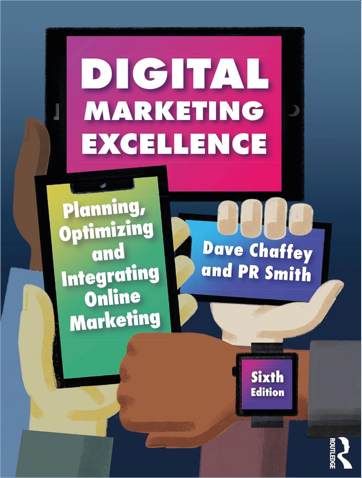The aim of digital marketing is simple, to support Marketing aims and activities.
So, in Digital Marketing, Strategy, Implementation and Practice, we simply define digital marketing as:
“Achieving marketing objectives through applying digital technologies and media“.
To help explain the scope and approaches used for running digital marketing, when creating the learning materials for the Institute of Data and Marketing between 2004 and 2010 we developed a more detailed explanation of digital marketing:
Digital marketing involves:
- Applying these technologies which form online channels to market: web, social media, e-mail, databases, plus mobile and digital TV.
To achieve these objectives:
- Support marketing activities aimed at achieving profitable acquisition and retention of customers . . . within a multichannel buying process and customer lifecycle.
Through using these marketing tactics:
- Recognising the strategic importance of digital technologies and developing a planned approach to reach and migrate customers to online services through digital and traditional communications. Retention is achieved through improving our customer knowledge (of their profiles, behaviour, value and loyalty drivers), then delivering integrated, targeted communications and online services that match their individual needs.
Today, I have sought to create a simple explanation of digital marketing which emphasizes five key areas of investment and management needed:
- Governance: Goals – Analytics, Strategy (Segmentation, Targeting, Brand Positioning), integration, marketing and sales alignment, resourcing, structure, marketing technology and data
- Media: Paid, owned, earned media i.e. Search, Social and Display ads
- Experience: Desktop / mobile website and apps. Customer service
- Messaging: Email, Chat, Social media, on-site interactions and personalization
- Content: Product and blog content, PDF downloads, Interactive tools






